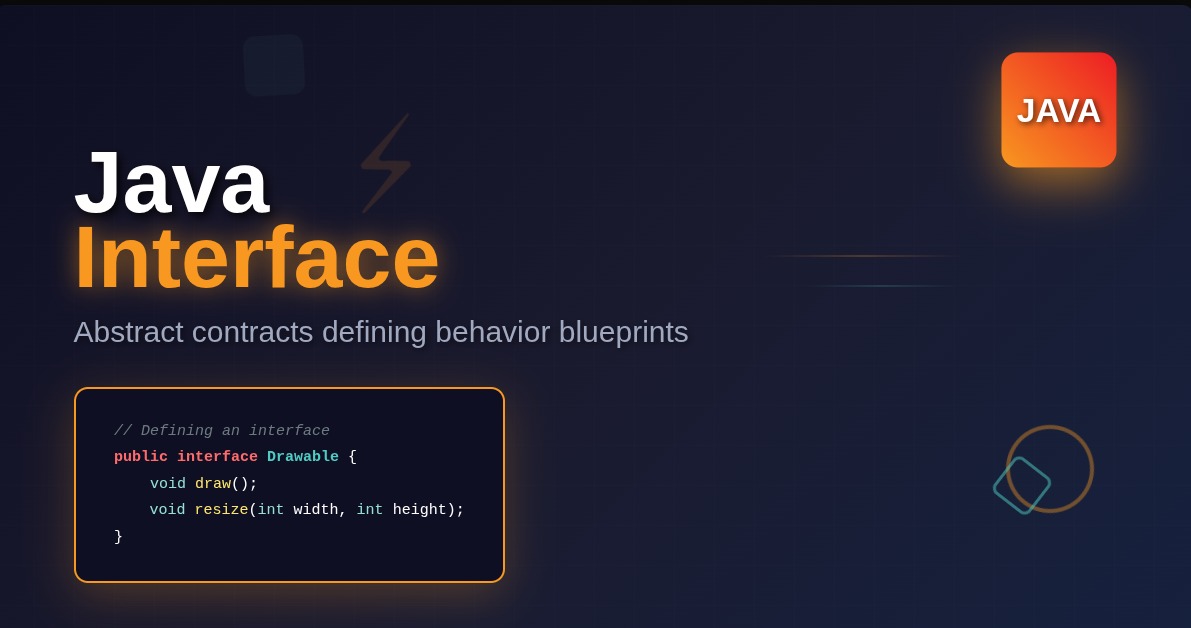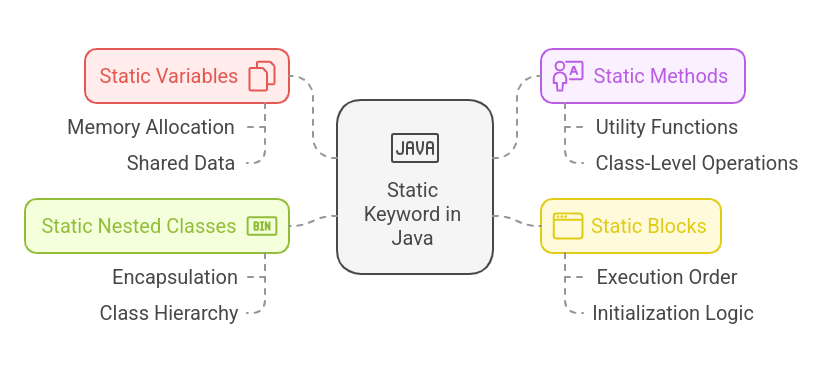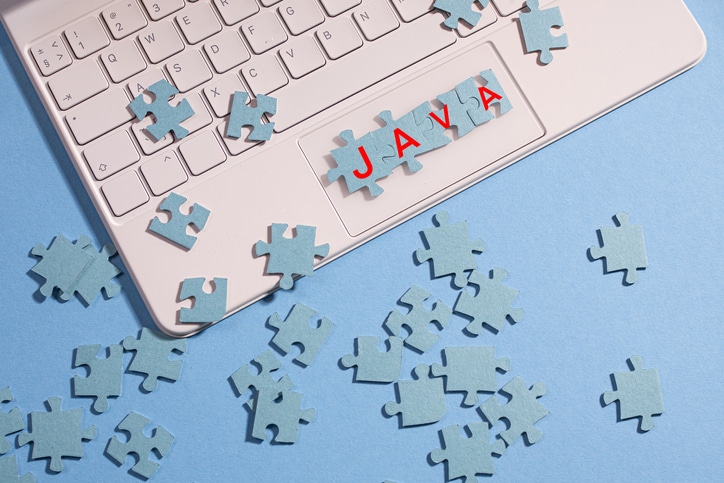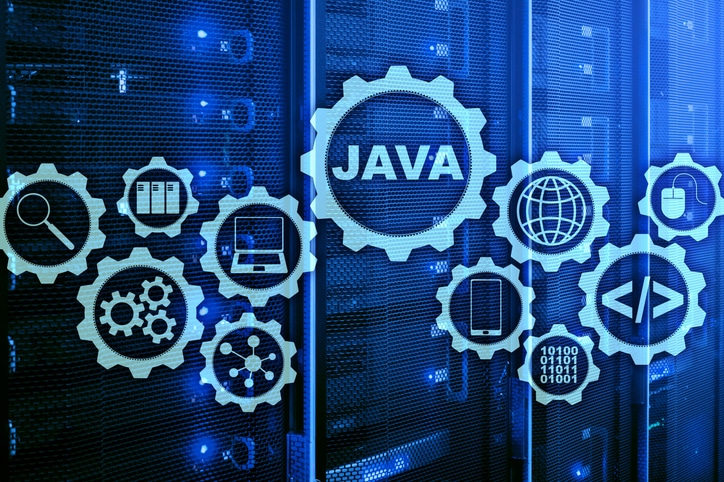- What is Lambda expression in Java?
- Why use Lambda Expression?
- Exploring Built-in Functional Interfaces in Java
- Syntax and Usage of Lambda Expressions
- Streamlining Code with Stream API and Lambda Expressions
- Leveraging Method References in Lambda Expressions
- Error Handling and Exception Propagation with Lambda Expressions
- Best Practices for Using Lambda Expressions
- Advanced Topics in Lambda Expressions
- Performance Considerations and Limitations of Lambda Expressions
- Conclusion
In Java, functional interfaces play a crucial role in enabling the use of lambda expressions. A functional interface includes only one abstract method, known as the functional method. The purpose of functional interfaces is to provide a contract for implementing specific behavior, allowing developers to write more flexible and concise code.
Lambda expressions, introduced in Java 8, are a powerful feature that allows the implementation of functional interfaces in a more concise and expressive manner. They provide a way to represent anonymous functions, which can be treated as values and passed around in code. Lambda expressions enable developers to write functional-style programming in Java, making code more streamlined and readable.
The benefits of using lambda expressions in Java are numerous. They help reduce boilerplate code by eliminating the need to define separate classes for implementing simple functionalities. Lambda expressions allow developers to express their intentions directly in the code, resulting in cleaner and more readable code. They promote a functional programming style, enabling developers to code that is easier to reason about and test. Lambda expressions also facilitate the use of parallel and concurrent programming by providing a more convenient way to express computations.
What is Lambda expression in Java?
Lambda expressions in Java are a powerful feature introduced in Java 8 that allows us to write more concise and expressive code. A lambda expression is essentially an anonymous function that can be treated as a method argument or a function object. It provides a way to represent a block of code as a single unit and pass it around to be executed at a later time. Lambda expressions are based on functional interfaces, which are interfaces that have a single abstract method.
With lambda expressions, we can eliminate the need to create anonymous inner classes for implementing functional interfaces. Instead of writing lengthy code with anonymous inner classes, lambda expressions allow us to define behavior directly inline, making the code more readable and reducing boilerplate code. Lambda expressions enable a more functional programming style in Java, bringing the benefits of better code organization, improved code reusability, and enhanced developer productivity.
Why use Lambda Expression?
Lambda expressions offer several advantages that make them a valuable addition to the Java language:
- Concise Syntax: Lambda expressions allow us to write more compact and readable code by eliminating unnecessary ceremony. The syntax of a lambda expression consists of parameters, an arrow token, and a body. It provides a clear and concise way to express functionality without the need for additional code constructs.
- Improved Readability: By reducing the code size and focusing on the core functionality, lambda expressions enhance the readability of the code. They make it easier to understand the intent of the code and make the logic more explicit.
- Functional Programming: Lambda expressions promote a functional programming style, which emphasizes writing code by composing functions. It encourages immutability, statelessness, and separation of concerns, resulting in code that is easier to reason about, test, and maintain.
- Enhanced APIs: Many Java libraries and frameworks have embraced lambda expressions to provide more expressive and flexible APIs. Lambda expressions enable the use of functional interfaces as method parameters, allowing developers to pass behavior directly as arguments, making the APIs more flexible and customizable.
- Performance Optimization: In certain scenarios, lambda expressions can lead to performance improvements. The JVM can optimize lambda expressions, especially when used in conjunction with streams or parallel processing, resulting in more efficient execution.
Exploring Built-in Functional Interfaces in Java
In addition to creating our own functional interfaces, Java provides a set of built-in functional interfaces in the Java API. These interfaces are part of the Java.util.function package and are designed to cover a wide range of use cases in functional programming. Let’s explore some of the commonly used functional interfaces and understand their purpose and usage.
- Predicate: The Predicate functional interface represents a boolean-valued function that takes an input and returns true or false. It is commonly used for filtering elements based on a specific condition. For example, we can use a Predicate to filter a list of numbers and select only the even numbers. By using lambda expressions, we can provide the condition directly in the code, making it more concise and readable.
- Consumer: The Consumer functional interface represents an operation that takes an input but does not return any result. It is useful when we want to perform an action on an input without returning anything. For example, we can use a Consumer to print each element of a list. Lambda expressions allow us to specify the action we want to perform, such as printing the element, in a more compact way.
- Function: The Function functional interface represents a function that takes an input of one type and produces an output of another type. It is used for transforming or mapping elements from one form to another. For example, we can use a Function to convert a string to its uppercase form. With lambda expressions, we can define the transformation logic concisely within the code.
These are just a few examples of the built-in functional interfaces available in Java. There are many more, each serving a specific purpose in functional programming. By leveraging these interfaces along with lambda expressions, we can write more expressive and concise code.
Let’s take a closer look at how to use each of these functional interfaces with lambda expressions:
- For the Predicate interface, we can use a lambda expression to specify the condition. For example:
List<Integer> numbers = Arrays.asList(1, 2, 3, 4, 5); List<Integer> evenNumbers = numbers.stream() .filter(n -> n % 2 == 0) .collect(Collectors.toList());
- With the Consumer interface, we can define the action we want to perform on each element. For example:
List<String> names = Arrays.asList("John", "Jane", "Mike");
names.forEach(name -> System.out.println("Hello, " + name));
- The Function interface allows us to define the transformation logic. For example:
List<String> names = Arrays.asList("John", "Jane", "Mike");
List<Integer> nameLengths = names.stream()
.map(name -> name.length())
.collect(Collectors.toList());
By using these built-in functional interfaces with lambda expressions, we can streamline our code and make it more concise and readable. They provide a powerful toolset for functional programming in Java, enabling us to express our intentions directly in the code and achieve greater code flexibility and maintainability.
Syntax and Usage of Lambda Expressions
Lambda expressions are a key feature introduced in Java 8 that allows us to write more concise and expressive code by representing a functional interface implementation in a more compact form. In this section, we will delve into the syntax and usage of lambda expressions, exploring different forms and discussing their impact on code readability and maintainability.
- Lambda Expression Syntax
A lambda expression consists of three main parts: the parameter list, the arrow token (->), and the body. The parameter list specifies the input parameters that the lambda expression takes. The arrow token separates the parameter list from the body, and the body contains the code that defines the behavior of the lambda expression.
The basic syntax of a lambda expression is as follows:
(parameter1, parameter2, ...) -> {
// body of the lambda expression
// code that defines the behavior
}
- Forms of Lambda Expressions
Lambda expressions can take different forms based on the context and the functional interface being implemented. Here are some examples of different lambda expression forms:
- Lambda expression with no parameters:
() -> {
// body of the lambda expression with no parameters
}
- Lambda expression with a single parameter:
parameter -> {
// body of the lambda expression with a single parameter
}
- Lambda expression with multiple parameters:
(parameter1, parameter2) -> {
// body of the lambda expression with multiple parameters
}
- Lambda expression with inferred types:
(parameter1, parameter2) -> expression
When the types of parameters can be inferred from the context, we can omit the parameter types. If the body consists of only one expression, we can omit the curly braces and return statement.
- Improved Readability and Maintainability
Lambda expressions offer several benefits that contribute to improved code readability and maintainability. They allow us to express our intentions more directly in the code, reducing the noise and boilerplate code associated with traditional anonymous inner classes. The concise syntax makes it easier to understand the purpose and behavior of the code at a glance.
Lambda expressions promote a more functional style of programming, focusing on the “what” instead of the “how.” By using lambda expressions, we can separate the behavior from the implementation details, leading to code that is more modular, flexible, and easier to reason about.
Lambda expressions facilitate the use of functional programming techniques such as higher-order functions, method references, and stream processing. This enables us to write code that is more declarative and expressive, emphasizing the desired outcome rather than the step-by-step procedure.
Streamlining Code with Stream API and Lambda Expressions
The Stream API in Java, introduced in Java 8, provides a powerful and expressive way to process collections of data. When combined with lambda expressions, it allows us to streamline our code and perform complex operations on collections concisely and efficiently. In this section, we will explore the Stream API and demonstrate how lambda expressions can be used with it to achieve code streamlining.
- Introduction to the Stream API
The Stream API represents a sequence of elements that can be processed in parallel or sequentially. It allows us to perform various operations on data collection, such as filtering, mapping, reducing, and more. The integration of lambda expressions with the Stream API is a key factor in making code more expressive and readable.
- Lambda Expressions and the Stream API
Lambda expressions play a crucial role in leveraging the power of the Stream API. They allow us to define concise and functional operations on elements within a stream. By combining lambda expressions with Stream API methods, we can write more declarative code focused on the desired outcome.
To illustrate this, let’s consider an example of filtering a collection of objects based on a specific condition using lambda expressions and the Stream API:
List<Integer> numbers = Arrays.asList(1, 2, 3, 4, 5, 6, 7, 8, 9, 10); List<Integer> evenNumbers = numbers.stream() .filter(number -> number % 2 == 0) .collect(Collectors.toList()); System.out.println(evenNumbers); // Output: [2, 4, 6, 8, 10]
In this example, we have a collection of numbers. By applying the stream() method to the collection, we obtain a stream of elements. Using the filter() method with a lambda expression, we specify the condition for selecting only the even numbers. Finally, we collect the filtered numbers into a new list using the collect() method.
- Common Stream Operations with Lambda Expressions
The combination of lambda expressions and the Stream API opens up a wide range of possibilities for performing operations on collections. Here are some common stream operations implemented using lambda expressions:
- Filtering elements based on a condition:
List<String> names = Arrays.asList("John", "Jane", "Alex", "Emily");
List<String> filteredNames = names.stream()
.filter(name -> name.length() > 4)
.collect(Collectors.toList());
- Transforming elements using mapping:
List<String> fruits = Arrays.asList("apple", "banana", "orange");
List<Integer> fruitLengths = fruits.stream()
.map(String::length)
.collect(Collectors.toList());
- Reducing elements to a single value:
List<Integer> numbers = Arrays.asList(1, 2, 3, 4, 5); int sum = numbers.stream() .reduce(0, (a, b) -> a + b);
These examples demonstrate how lambda expressions, in combination with the Stream API, allow us to streamline our code and perform operations on collections more effectively.
Leveraging Method References in Lambda Expressions
Method references in Java provide a concise way to refer to methods without invoking them explicitly. They can be used in lambda expressions to simplify code further and improve code readability. In this section, we will explore method references, understand their usage in lambda expressions, and see how they can be leveraged to streamline code.
- Explanation of Method References
Method references allow us to refer to methods by their names without executing them. They provide a shorthand notation for lambda expressions when the lambda body consists of a single method call. By using method references, we can make our code more expressive and reduce the amount of boilerplate code.
- Types of Method References
Java includes four types of method references, each denoted by a double colon (::) operator. The types are:
- Reference to a static method:
ClassName::staticMethodName
This type of method reference refers to a static method of a class.
- Reference to an instance method of a particular object:
object::instanceMethodName
This type of method reference refers to an instance method of a specific object.
- Reference to an instance method of an arbitrary object of a particular type:
ClassName::instanceMethodName
This type of method reference refers to an instance method of any object of a given class type.
- Reference to a constructor:
ClassName::new
This type of method reference refers to a constructor of a class.
Error Handling and Exception Propagation with Lambda Expressions
Error handling is an essential aspect of writing robust and reliable code, including code that involves lambda expressions in Java. In this section, we will explore error handling and exception propagation with lambda expressions, understand the different approaches to handling exceptions, and discuss best practices for effective error handling.
- Discussion of Error Handling and Exception Propagation
Lambda expressions allow us to encapsulate behavior and pass it as a parameter to methods or assign it to functional interfaces. When exceptions occur within lambda expressions, it is crucial to handle them appropriately to prevent program failures and ensure proper error reporting.
- Approaches to Handle Exceptions in Lambda Expressions
- Handle exceptions within the lambda body:
By using try-catch blocks within the lambda expression, exceptions can be caught and handled directly. This approach can make the lambda expression more complex and cluttered.
- Wrap checked exceptions in unchecked exceptions:
When working with lambda expressions that may throw checked exceptions, we can wrap those exceptions in unchecked exceptions, such as RuntimeException. This approach allows us to avoid declaring checked exceptions in the lambda expression’s functional interface.
- Define functional interfaces that allow exceptions:
Instead of using standard functional interfaces, we can create custom functional interfaces that include exception specifications. This approach enables lambda expressions to declare and propagate checked exceptions.
- Best Practices for Error Handling in Lambda Expressions
To ensure effective error handling with lambda expressions, consider the following best practices:
- Keep lambda expressions concise:
It is recommended to keep the lambda expressions focused on a single task and avoid writing lengthy or complex expressions. This helps in better error isolation and handling.
- Handle exceptions at an appropriate level:
Consider where it makes the most sense to handle exceptions. Depending on the context and the desired behavior, exceptions can be handled within the lambda expression itself, propagated to the caller, or caught and processed at higher levels.
- Provide meaningful error messages:
When catching and handling exceptions within lambda expressions, it is crucial to provide meaningful error messages that aid in debugging and understanding the cause of the exception.
- Use logging frameworks:
Utilize logging frameworks, such as Log4j or SLF4J, to log exceptions and error information. This helps in tracking errors and diagnosing issues during runtime.
By following these best practices, developers can effectively handle errors and exceptions in lambda expressions, leading to more robust and reliable code.
Best Practices for Using Lambda Expressions
Lambda expressions offer a powerful way to streamline code in Java, but to fully leverage their benefits. It is important to follow best practices. In this section, we will explore some guidelines and tips for effectively using lambda expressions, ensuring clean and readable code, and addressing considerations for debugging and testing.
- Guidelines for Choosing Appropriate Functional Interfaces and Lambda Expressions
- Understand the functional interface requirements:
When using lambda expressions, it is crucial to select the appropriate functional interface that matches the desired behavior. Understand the functional interface’s purpose and the parameters it expects.
- Leverage existing functional interfaces:
Java provides a wide range of predefined functional interfaces, such as Predicate, Consumer, and Function. Utilize these interfaces whenever possible to maintain code consistency and improve code maintainability.
Consider creating custom functional interfaces:
If none of the existing functional interfaces fit your requirements, consider creating custom functional interfaces tailored to your specific needs. This allows for better code organization and enhances code readability.
- Tips for Writing Clean and Readable Lambda Expressions
- Keep lambda expressions concise and focused:
Lambda expressions are meant to be concise and express the desired behavior efficiently. Avoid writing lengthy expressions or trying to perform multiple unrelated tasks within a single lambda.
- Use meaningful parameter names:
Choose meaningful and descriptive names for lambda expression parameters. This enhances code understanding and improves readability.
- Enclose complex expressions in parentheses:
If your lambda expression involves complex expressions or multiple statements, enclose them in parentheses to enhance clarity and maintain readability.
- Avoid side effects:
Lambda expressions should ideally be stateless and avoid modifying external variables or causing side effects. This helps in writing code that is easier to reason about and less prone to bugs.
- Considerations for Debugging and Testing Code with Lambda Expressions
- Use descriptive debug messages:
When debugging code that involves lambda expressions, include descriptive messages in your debug logs or exception handling to provide meaningful information about the state and behavior of the lambda expression.
- Test lambda expressions in isolation:
Unit testing is important when working with lambda expressions. Ensure that lambda expressions are tested in isolation, covering various scenarios and edge cases, to verify their correctness and expected behavior.
- Debug with lambda breakpoints:
When debugging code that contains lambda expressions, use breakpoints specifically set within the lambda to pause execution and inspect variables and behavior. This can provide valuable insights into lambda execution flow.
By following these best practices, developers can harness the full potential of lambda expressions in Java. Writing clean and readable lambda expressions, choosing appropriate functional interfaces, and considering debugging and testing aspects contribute to code maintainability, readability, and reliability.
Advanced Topics in Lambda Expressions
Lambda expressions in Java offer a concise and powerful way to streamline code. In addition to the basic concepts and usage covered earlier in this article, there are advanced topics that can further enhance your understanding and utilization of lambda expressions.
- Understanding Capturing Variables in Lambda Expressions
- Definition of captured variables:
Captured variables in lambda expressions refer to the variables from the enclosing scope that are accessed within the lambda body. Understand how captured variables enable lambda expressions to access external states.
- Effectively using captured variables:
When working with captured variables, ensure that the variables are effectively utilized and necessary for the behavior of the lambda expression. Avoid unnecessary captures that may increase complexity or introduce unintended side effects.
- Final or effectively final variables:
Java lambda expressions can only access final or effectively final variables from the enclosing scope. Understand the concept of effectively final variables and their impact on lambda expressions.
- Overview of Closures and Their Role in Lambda Expressions
- Definition of closures:
Closures are self-contained code blocks that can be passed around and executed independently. Understand how closures relate to lambda expressions and their ability to capture variables from the surrounding scope.
- Advantages of closures:
Closures provide a convenient way to package code together with captured variables, creating self-contained units of behavior. This promotes encapsulation and enhances code modularity.
- Potential challenges with closures:
While closures offer great flexibility, it’s important to be mindful of potential challenges, such as managing captured variables’ lifetimes and avoiding unintended memory leaks.
- Exploring Advanced Use Cases and Patterns with Lambda Expressions
- Advanced stream operations:
Dive deeper into the Stream API and explore advanced operations that can be performed using lambda expressions, such as grouping, partitioning, and custom collectors.
- Functional programming patterns:
Discover common functional programming patterns and how they can be implemented using lambda expressions, such as memoization, currying, and composing functions.
- Parallel processing with lambda expressions:
Explore the ability to parallelize computations using lambda expressions and the Stream API, leveraging multi-core processors for improved performance.
By understanding and mastering these advanced topics in lambda expressions, developers can unlock the full potential of functional programming paradigms in Java. Capturing variables, utilizing closures, and exploring advanced use cases and patterns empower developers to write more expressive, modular, and efficient code.
Performance Considerations and Limitations of Lambda Expressions
While lambda expressions provide a convenient and expressive way to streamline code in Java, it is essential to consider their performance implications and be aware of any limitations they may have. In this section, we will explore the performance considerations and limitations of lambda expressions, as well as strategies for optimizing code that uses lambda expressions.
- Discussion of the Performance Impact of Lambda Expressions
- Overhead of lambda expression creation:
Understand that there is a small overhead involved in creating lambda expressions, as the runtime needs to generate the necessary bytecode and dynamically bind the lambda to a functional interface. This overhead is typically negligible for most applications.
- Execution performance:
Lambda expressions themselves do not introduce any significant runtime performance overhead. The performance impact primarily depends on the code inside the lambda expression and the underlying operations performed.
- Potential performance benefits:
In certain scenarios, lambda expressions can improve performance by enabling more efficient code execution, such as through parallel stream processing or optimized function composition.
- Limitations and Trade-offs of Using Lambda Expressions
- Debugging challenges:
Lambda expressions can make code debugging more challenging, as they introduce anonymous blocks of code without explicit names. Understand the techniques and tools available for effective debugging in lambda expressions.
- Readability trade-offs:
While lambda expressions can make code more concise, it’s important to strike a balance between brevity and readability. Complex or lengthy lambda expressions can become difficult to understand, maintain, and debug.
- Serialization limitations:
Lambda expressions are not serializable unless the underlying functional interface is marked as serializable. Be cautious when working with lambda expressions in scenarios that require serialization, such as distributed computing or caching.
- Strategies for Optimizing Code with Lambda Expressions
- Avoid unnecessary stateful lambda expressions:
Stateful lambda expressions, which rely on mutable states, can introduce complexities and potential issues. Whenever possible, prefer stateless lambda expressions for better code clarity and thread safety.
- Profile and optimize critical sections:
Identify performance bottlenecks in your code and profile the execution to pinpoint areas where optimization, including optimizing lambda expressions, can have a significant impact.
- Consider alternative approaches:
In some cases, an alternative approach, such as using traditional methods or anonymous classes instead of lambda expressions, may be more suitable for optimizing performance or achieving specific functionality.
By understanding the performance considerations and limitations of lambda expressions, developers can make informed decisions when utilizing them in their code. Careful consideration of performance implications, readability, and trade-offs will enable developers to optimize their code effectively and leverage the benefits of lambda expressions while ensuring the overall efficiency and maintainability of their Java applications.
Check out this Advanced Certificate Program in Full Stack Software Development – your ticket to an exciting career. Whether you’re a beginner or want to level up your skills, this program equips you with what you need for success.
Conclusion
By incorporating functional interfaces and lambda expressions into their coding practices, developers can unlock the benefits of cleaner and more expressive code, improved code maintainability, and increased developer productivity. Embrace continuous learning and experimentation with lambda expressions, exploring their application in different scenarios and staying up to date with the latest advancements in Java and functional programming.
In the ever-evolving landscape of software development, functional interfaces, and lambda expressions have emerged as essential tools for modern Java developers. By harnessing their potential, developers can create elegant, efficient, and robust code that not only meets the demands of today’s applications but also paves the way for future innovations in Java programming. Embrace the power of functional interfaces and lambda expressions and embark on a journey of streamlined and expressive Java code.
Discover a range of software development courses that can help you start a career in this exciting field. These courses are designed to teach you the essential skills needed in the industry. Start your journey towards a successful career in software development today!






